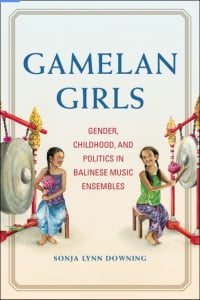Gamelan Girls
- Title
- Gamelan Girls
- Original language
- Author(s)
- Illustrator(s)
- Publisher
- University of Illinois Press
- ISBN
- —
- Publication date
- 2019
- Subjects
- culture
- music
- gamelan
- ethnomusicology
- Find Book
- Www.press.uillinois.edu
- Related Env. Initiatives
- Related Places
- Related Biographies
- Related Children's Books
- Related Holidays
- Related Folktales
- Related Comics
- Related Lontar
- Linked words
Description(s)
The girls and young women reshaping gamelan in Bali In recent years, girls' and mixed-gender ensembles have challenged the tradition of male-dominated gamelan performance. The change heralds a fundamental shift in how Balinese think about gender roles and the gender behavior taught in children's music education. It also makes visible a national reorganization of the arts taking place within debates over issues like women's rights and cultural preservation. Sonja Lynn Downing draws on over a decade of immersive ethnographic work to analyze the ways Balinese musical practices have influenced the processes behind these dramatic changes. As Downing shows, girls and young women assert their agency within the gamelan learning process to challenge entrenched notions of performance and gender. One dramatic result is the creation of new combinations of femininity, musicality, and Balinese identity that resist messages about gendered behavior from the Indonesian nation-state and beyond. Such experimentation expands the accepted gender aesthetics of gamelan performance but also sparks new understanding of the role children can and do play in ongoing debates about identity and power.







Enable comment auto-refresher